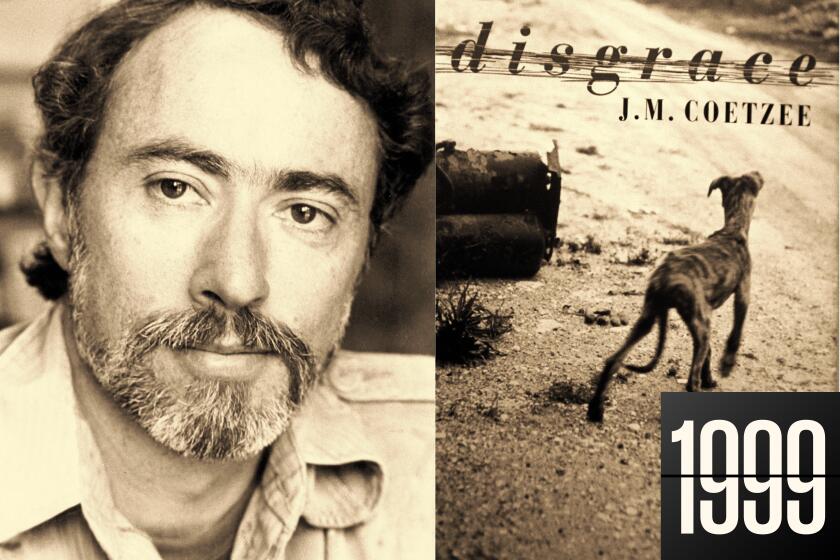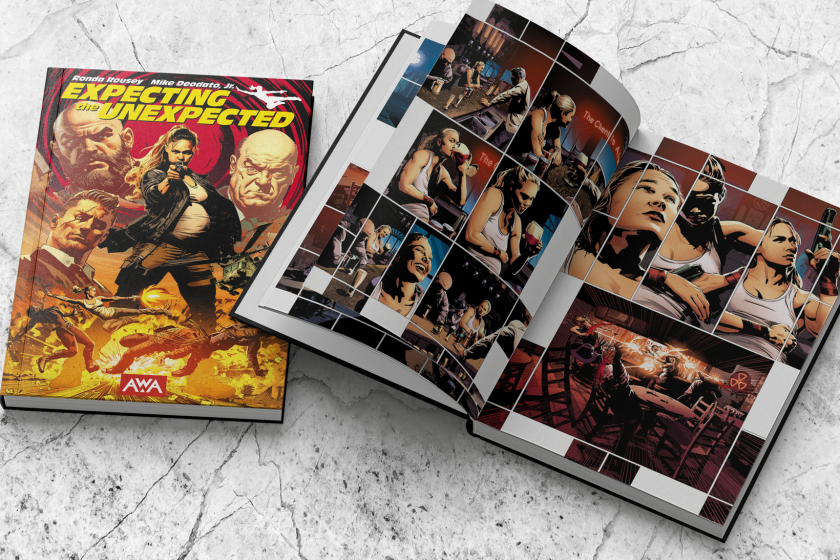Some of My Best Friends
When I first heard the title of Ian Frazier’s “On the Rez,” his nonfiction study of the brief time he spent on the Pine Ridge Reservation in South Dakota, I laughed out loud. A white man using the word “rez” to describe the reservation is the equivalent of a white man using the word “hood” to describe a black inner-city neighborhood. It implies a degree of cultural familiarity that is very rare.
In his role as journalist, tourist and friend to a few Oglalas, Frazier may have earned the right to call the reservation “the rez,” but that would only be in the company of those Oglalas who call him friend. When used as the title of the book, Frazier’s formal use of “the rez” marks him as an outsider eager to portray himself as an insider, as a writer with a supposedly original story to tell and as a white man who is magically unlike all other white men in his relationship to American Indians.
Dozens, perhaps hundreds, of white men have written books about Indians, and all of those authors surely believed their work to be special, original, even definitive. Frazier certainly displays plenty of self-confidence by beginning his book with this simple declarative sentence: “This book is about Indians, particularly the Oglala Sioux who live on the Pine Ridge Reservation in southwestern South Dakota, in the plains and badlands in the middle of the United States.” Notice that Frazier’s opening gambit doesn’t include possessives or qualifiers. He carefully avoids the more accurate description of his book: “This is Ian Frazier’s book containing his ideas and opinions of the Oglala culture, particularly the idea of heroism and public service and its vague influence on the larger American culture.” He neglects to mention that his ideas and opinions were formed by his relationships with just a handful of Oglalas and by an unspecified number of visits to the reservation. How much time did Frazier spend on the reservation? I cannot tell you. He is vague about that subject for reasons I don’t quite understand.
And why exactly did Frazier choose the Oglala? Mostly because he is good friends with an Oglala man named Le War Lance, a nomadic soul who, according to Frazier’s own estimates, lies about 80% of the time. Since War Lance serves as Frazier’s primary reservation tour guide, it’s safe to assume that a comparable percentage of “On the Rez” falls distinctly short of what might be termed indigenous truth.
For example, Frazier more than once extols the resurrection and rise of the Pequot Indians of Connecticut and their construction of one of the world’s largest casinos, but he never mentions the Pequot’s controversial position in Indian country. I think of a popular joke on the Indian powwow circuit: “Hey, did you know the Pequots are the only Indian tribe to participate in the Million Man March?” The joke is racist and revealing of the complicated issues surrounding the concept of Indian identity.
Who is and who is not Indian? A tough question, to be sure, but Frazier focuses only on white people’s concept of Indian identity. As he writes, “Indeed, the Indians of America are so varied that I think you can find an appropriate tribe for almost anyone.” Never mind that these Indian tribes’ primary struggle is to establish sovereignty and independence from white government and from white opinion about how tribes should function. Many Indians, myself among them, believe that the concept of tribal sovereignty should logically extend to culture and religion, a concept which Frazier never addresses. Nowhere in the book does he examine his own motivations or question his observations. He writes about the Oglalas without stopping to wonder if the Oglalas want to be written about.
When Frazier attempts to interview an Oglala woman about her family, she rebuffs him by telling him she’d talk it over with her sisters first and that he should ask again in a few months, and he has no clue that he has been thoroughly rejected. He actually comes back a few months later and asks her again for the interview and is once again rejected. This Oglala woman doesn’t want to share family stories with a white man. Indeed, Frazier has no idea that many of the Oglala have no interest in sharing their family stories with any white man--or any other Indian for that matter. Again and again, he displays a startling lack of self-consciousness in this book.
Frazier is a talented, sensitive and humorous writer--and he does portray the reservation as a place filled with just as much magic as loss, just as much joy as pain, just as much love as hopelessness--but what does that talent accomplish within the pages of his book? Frazier does a very tricky thing: He almost convinces us that he’s writing about the Oglala Sioux, about their rez, when, in reality, he’s mostly talking about himself, about his feelings, about his real and imagined pain.
He cheerfully admits to a lifelong fascination with Crazy Horse, the legendary Oglala warrior who, among many other heroic deeds, helped defeat Custer and the Seventh Cavalry at Little Bighorn. Frazier confesses that he often turns to the spirit of Crazy Horse for help. “What would Crazy Horse do?” Frazier asks himself when confronted with a difficult decision or moral dilemma. What denial! What romanticism! I find it humorous that a white man like Frazier turns to Crazy Horse for answers when Crazy Horse was more apt to shoot a white man in the head than to sit down with him and offer career advice. If Crazy Horse were to offer Frazier any advice, he might tell him not to drive unreliable cars during Montana blizzards, which he does, wrecking and then “re-driving” that wrecked car along Interstate 90 during a particularly brutal Montana snowstorm. I find the whole episode distasteful, even morbid, considering the large number of Oglalas who have died in car wrecks on that road.
Perhaps the most painful and haunting story in the book involves SuAnne Big Crow, a high school basketball star, a gentle and sensitive human being, who died in an Interstate 90 car wreck in 1992 at the age of 18. On and off the court, Big Crow engaged in acts of heroism too numerous to detail here, but it is enough to say she enjoys a mythic status among the Oglala. Frazier’s rendering of her story is appropriately moving and adulatory, but its construction is deceptive.
Big Crow’s life story is told with first-person accounts by her family and friends, including long passages of transcribed recollections by 10 of Big Crow’s closest friends and family. Frazier surprised me by letting the Indians talk, without interruption and without interpretation. I thought he would be willing to give the Oglalas the last word, the last memory, the last lessons by which we could learn something about life by learning how Big Crow lived hers. But he didn’t, and he continues on with accounts of basketball games he never saw, of funerals he never attended and of conversations he never heard. He concludes Big Crow’s story with his account of visiting the crash site on Interstate 90 where she died. He details for us how he thought the accident might have occurred and what Big Crow must have been thinking when she fell asleep at the wheel and woke up in a deadly panic. He notices the strange glances from the people in passing cars as he stands alone on the freeway where “a person should not be standing.” After telling the story of Big Crow, after hearing the voices of all those Oglalas and whites who knew her and loved her and sometimes worshiped her, he writes her an imaginary obituary for an imaginary monument that marks the site of her very real death. He delivers her literary eulogy, buries her within the pages of his book and then finishes his ceremony by tramping into the trees beside the freeway.
Of course, Frazier writes all of this with transcendent talent, with compelling metaphors and gorgeous description, and I was moved. But something troubled me, and I realized that Frazier and Big Crow had never met each other, that he knew of her only through other people’s stories and newspaper clippings. Is it possible to mourn the death of a stranger? Of course it is, but in doing so, we mourn only the death of an idea while simultaneously celebrating our capacity to feel. We mourn the loss of what that stranger means to us and not what the deceased means to her family and friends. Does Frazier ever admit to such a distinction? Does he understand the world of difference between attending funerals and only writing about them? Does he ever admit that somebody from “the rez” has a different life experience than somebody who is just writing about the rez? Does he understand that the title of his book should have been “On Their Reservation?”
As he could be accused of objectifying Big Crow, he is also guilty of objectifying the entire Oglala Nation. He claims ownership of the tribe when he states, “By blood and circumstances, I can never be an Oglala; but by long-standing affinity, the Oglalas are my tribe.” I pray that all of you understand the power of Frazier’s use of the possessive “my tribe.” I hope that you realize that an Indian and a white man can both use that possessive and mean two entirely different things.
Frazier claims ownership of the tribe based on his superficial admiration of certain aspects of their culture. He likes the way Indians dress, without considering how economic means most often determine any particular Indian’s wardrobe. He admires Indian hair and wears his own hair in an imitative ponytail, without recognizing the complex cultural signifiers of any particular Indian hairstyle. He shares in the deifying of Indian basketball heroes while omitting the cold truth that few Indians have ever played college basketball and that no Indian man and only one Indian woman has ever played big-time professional basketball. He raises a patriotic flag for Oglala war veterans but never addresses this bitter irony: The Oglalas are fighting for a country that refuses to return the Black Hills, a refusal that is essentially an act of war. He admires the Oglalas because of who he believes them to be, not because of who the Oglalas believe themselves to be.
In describing his relationship to the tribe, he writes, “In the same way that I have gotten used to my liking for hot sauce or my aversion to crowds, I accept that my affections veer toward the Oglala Sioux.” Yes, in the end, with all of his talent, sensitivity and originality, Frazier places the Oglala on the supermarket shelf alongside the habanero chiles, bottles of Prozac and many copies of “On the Rez.”
More to Read
Sign up for our Book Club newsletter
Get the latest news, events and more from the Los Angeles Times Book Club, and help us get L.A. reading and talking.
You may occasionally receive promotional content from the Los Angeles Times.






